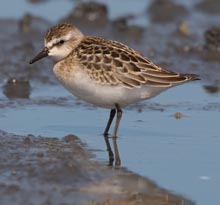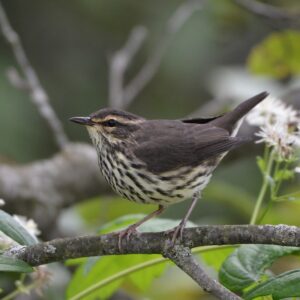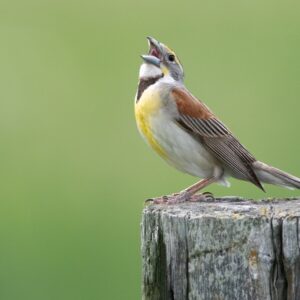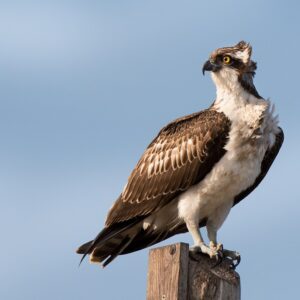The Birds and Tides of Nova Scotia’s Minas Basin
Brett Hare was an intern with Nature Canada’s conservation team in the early part of 2013. He spoke with Rick Whitman, Minas Basin Important Bird Area Caretaker, about his role in the IBA Caretaker program.
Nova Scotia’s Minas Basin has been designated an Important Bird and Biodiversity Area (IBA) due to its significance as a staging area for many bird species. The tide here fluctuates 16-17 meters between high and low tide. During medium and low tides, vast expanses of mudflats are exposed, creating a tremendous feeding area for shorebirds.
Rick Whitman has been a caretaker for the Minas Basin IBA for over a year, possessing a passion for birds and photography.
“I’ve been a birder for decades” Rick explained. “Particularly in the last 5 years, I’ve been really interested in shorebirds.”
Tides play a major role in within this IBA as they expose mudflats which are teaming with mud shrimp. This acts as a “fattening-up” point for birds during their migration. Often, migrating birds will continue feasting in this area for 10 days to 2 weeks.
The IBA is very accessible to the public, the most accessible site being Evangeline Beach where visitors can drive right up to the beach.
Minas Basin is a great place for birding with many different species of shorebirds.
“I drive there several times a week.” Rick explains. “Birds are very diverse; I saw 20 different species of shorebirds last year.”
Rick noted the various birds witnessed within the IBA which included the Black-bellied Plover, Semi-palmated Plover, Greater Yellow Legs, Willets, Sanderlings, Semi-palmated Sandpiper, Least Sandpiper, White-rumped Sandpiper, and the Dunlin. As well, he noted some uncommon species for the area such as a Marbled Godwit, which is part of the rare bird list for Nova Scotia. He also witnessed a Whimbrel, 3 Red knots in the process of migrating north during the spring, Pectoral Sandpipers, Short-billed Dowitcher, and a Red-necked Phalarope which was photographed by Rick as it strolled along the beach.
Being an IBA caretaker comes with its share of rewarding experiences as Rick found out. In 2012, while photographing and documenting the various birds, Rick discovered that some of them had tiny flags attached to their legs. He photographed flags from 7 different birds and posted them on eBird, a website used to share bird sightings. Rick discovered that these flags belonged to the New Jersey Audubon Society, an organization that studies and tracks birds as they migrate each year. Some of these birds had travelled as far as Brazil. Rick observed that one of the birds had stayed for 29 days within the Minas Basin.
Rick’s photography and documentation of bird species within the Minas Basin IBA are a valuable resource to birders and organizations worldwide.
“My overall objective is to monitor the populations” he stated.
Rick posts all his sightings on eBird, which are then shared with Bird Studies Canada. As a caretaker, Rick attends meetings and is part of a committee that engages in various discussions regarding the IBA and bird conservation. Genuine stewardship is a key focus of Rick’s, who wishes to see the Minas Basin IBA continue to flourish and be a key staging area for many species of shorebirds during migration.
The IBA Caretakers Network was launched in 2006 by BC Nature in British Columbia with financial assistance from Nature Canada’s Communities in Action Fund, and is supported by national sponsor TransCanada Corporation. In 2009, TransCanada Corporation committed $1 million over the next five years to support Nature Canada’s bird conservation efforts. Other key donors like Wildlife Habitat Canada, The McLean Foundation and Environment Canada have provided additional support.




